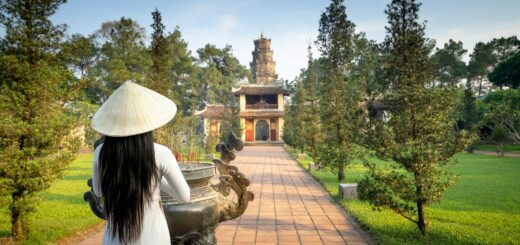The Enigmatic Origins And Fascinating History Of Ayahuasca
Ayahuasca, a potent and revered brew from the Amazon rainforest, has a legacy that spans cultures, borders and hundreds, if not thousands of years. A concoction of indigenous knowledge, spiritual practice, and healing, ayahuasca offers a gateway into the visionary experience of shamanic traditions in South America.
The word Ayahuasca comes from the native Quechua language; ‘aya’ means spirit or ancestor, and ‘huasca’ means vine or rope. Thus, Ayahuasca can be translated as the ‘vine of spirits’ or ‘rope of the dead’, a name that highlights its long-held use as a spiritual conduit. Ayahuasca is an entheogenic brew prepared from the Banisteriopsis caapi vine and usually the Chacruna leaf, endemic species to the Amazon rainforest. This brew is known for its powerful psychedelic properties, allowing users to experience intense visions and introspective insights.
Precise origins of Ayahuasca use are difficult to trace due to the oral nature of the storytelling practices of indigenous cultures. However, archaeological evidence – like that found in Ecuador, a small ceremonial bowl over a thousand years old with ayahuasca residue – suggests its use dates back to at least 1000 AD (The artifacts of Chavín de Huantar, Peruvian Andes). It’s widely believed that Ayahuasca practices have been passed down through generations, allowing indigenous Amazonian tribes to commune with the spirit world, heal the sick, and bring balance to their communities.
With the invasion of South America by the Spanish Conquistadors in the 16th century, Ayahuasca, along with many other elements of indigenous life, was suppressed. Catholic missionaries considered any tribal spiritual practices as pagan rituals, including the use of Ayahuasca. However, the knowledge and use of Ayahuasca managed to survive in the remote corners of the Amazon rainforest, maintained by indigenous tribes despite the cultural disruption.
In the 19th century, rubber tappers working in the Amazon were introduced to Ayahuasca, igniting interest back in the western world. Richard Spruce, an English botanist, was one of the first to document its use in 1851 (“A history of Ayahuasca”, MAPS). By the early 20th century, several religious movements in Brazil that synthesized indigenous, Christian, and African beliefs began incorporating Ayahuasca into their rituals, attributing healing and visionary properties to this potent brew.
Even the famous writer William Burroughs wrote about his experience with Ayahuasca in his 1953 book, “The Yage Letters”, eventually sharing the experience with Allen Ginsberg. This introduction propelled Ayahuasca into the growing psychedelic movement of the 1960s and 70s.
Scientific research into the brew didn’t gain traction until the late 20th century when more serious exploration of its properties began. This included studying the chemistry of the mixture and its potential therapeutic applications. Ayahuasca is now considered an essential tool in psychotherapy for treating PTSD, depression and addiction in certain contexts, with ongoing research worldwide (The Therapeutic Potentials of Ayahuasca: Possible Effects against Various Diseases of Civilization).
Today, Ayahuasca tourism has become a burgeoning industry, with many westerners seeking out the indigenous shamans of the Amazon for a personal healing experience. This, however, has sparked concerns about cultural appropriation and the sustainability of the Ayahuasca plant.
In conclusion, Ayahuasca’s history is an intriguing tapestry, interwoven with indigenous folk traditions, colonial oppression, subcultural exploration and scientific discovery. Its enigmatic origins within the Amazon rainforest and its use in shamanism continue to intrigue, inspire and inform our understanding of this potent entheogenic brew. It is a testament to the resilience of cultural traditions and the enduring quest for spiritual enlightenment and healing.


